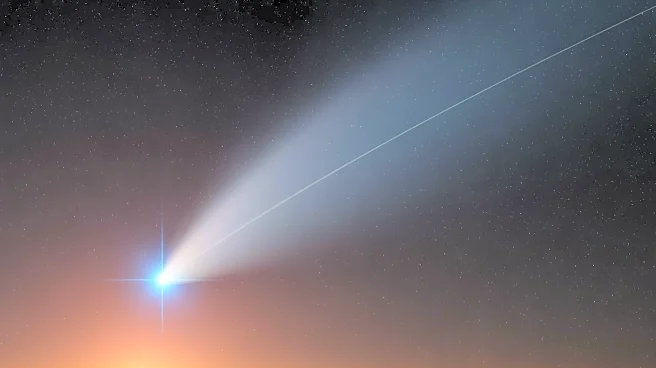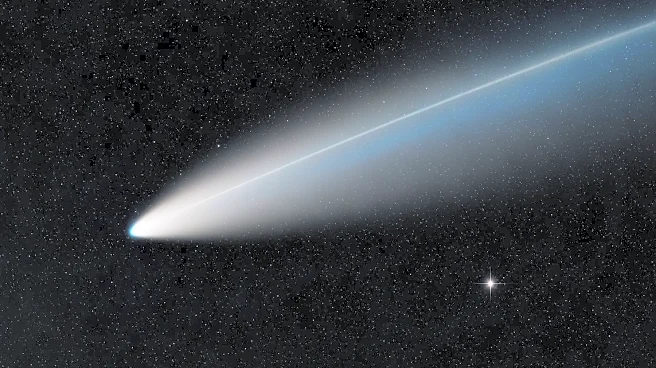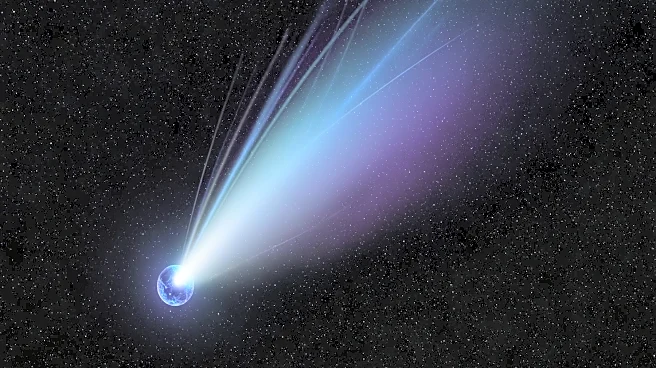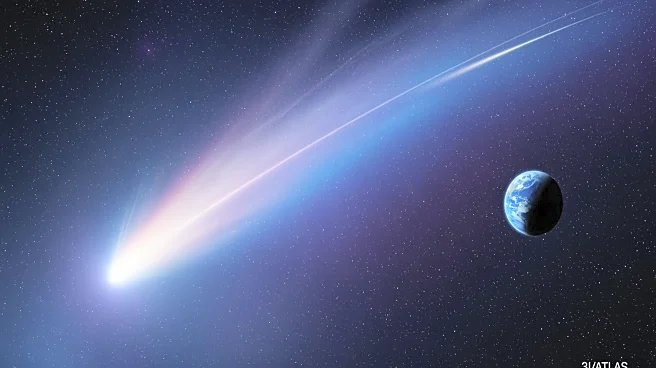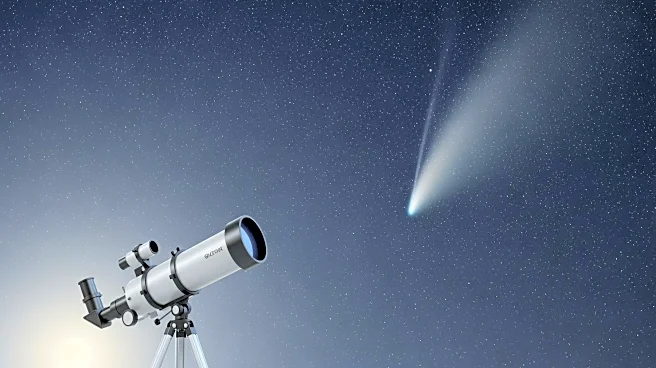What's Happening?
Comet C/2025 A6 (Lemmon) is currently visible in the evening sky, presenting a unique opportunity for observation before its perihelion passage on November 8. The comet, discovered by the Mount Lemmon Survey,
is traveling at 130,000 miles per hour and is expected to become brighter as it approaches the Sun. Observers are advised to look for the comet approximately 45 minutes after sunset, using binoculars or telescopes to enhance visibility. The comet's trajectory through the constellation Ophiuchus poses a challenge due to the lack of bright stars nearby.
Why It's Important?
The visibility of Comet Lemmon offers a rare chance for astronomers and enthusiasts to observe a celestial event that won't occur again until the year 3175. The comet's perihelion passage will alter its orbital period, making this an important moment for scientific study and public interest. Observing comets can provide insights into the composition and behavior of these ancient celestial bodies, contributing to our understanding of the solar system.
What's Next?
Observers are encouraged to take advantage of the current visibility window, as the comet's brightness may fluctuate due to its distance from Earth and solar energy exposure. The Mount Lemmon Survey will continue to monitor the comet's trajectory and provide updates on its visibility. The scientific community is interested in studying the comet's characteristics during its perihelion passage.
Beyond the Headlines
The study of comets like Lemmon contributes to our understanding of the solar system's formation and evolution. These celestial bodies are remnants from the early solar system, offering clues about the conditions and processes that shaped our planetary neighborhood.


